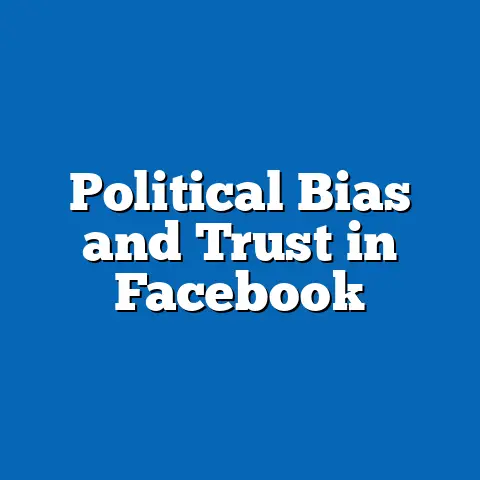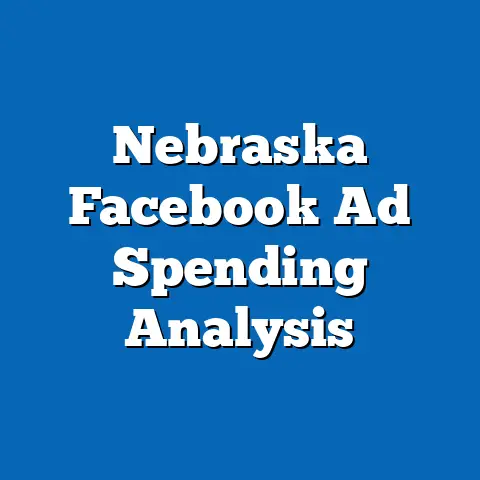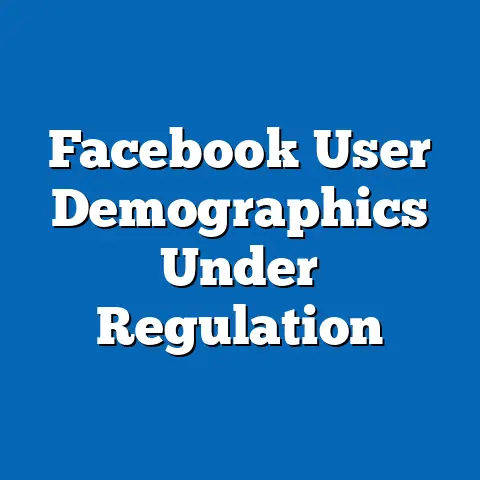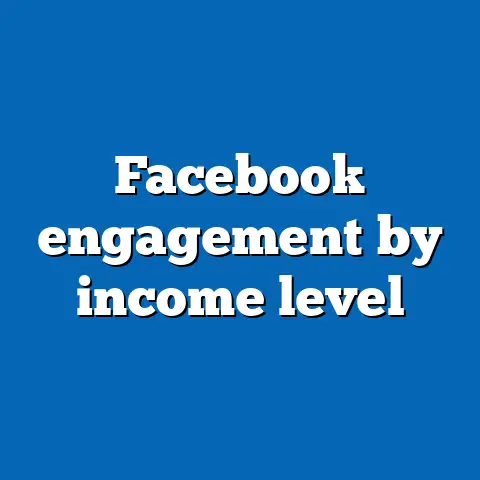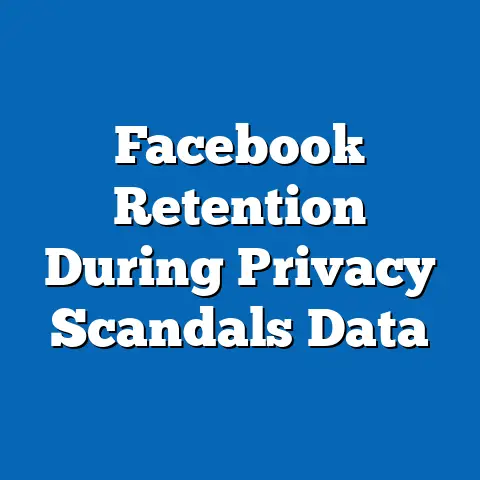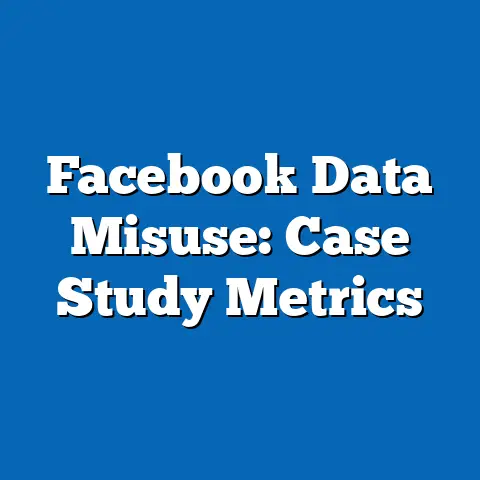Facebook Group Privacy Issues (65% Unaware)
Why did the Facebook user cross the road? To join a private group—only to find out their personal data was already on the other side, shared with the world! While this jest may elicit a chuckle, the underlying issue of privacy in Facebook Groups is no laughing matter, as a staggering 65% of users remain unaware of the potential risks associated with their data in these communities.
The report is structured into clear sections: an overview of current privacy issues, a demographic breakdown of awareness levels, statistical projections for future trends, key drivers of change, methodological assumptions and limitations, and a discussion of broader social implications. Each section incorporates data visualizations to aid understanding, and technical terms are defined for accessibility. Let us begin by examining the scope of the problem.
Section 1: The Current Landscape of Facebook Group Privacy Issues
Facebook Groups are online communities within the platform where users can share content, discuss topics, and organize events, often under the assumption that their interactions are private. However, privacy settings for these Groups—categorized as Public, Closed, or Secret (now often referred to as Private with visibility options)—are frequently misunderstood or misconfigured. A 2023 survey by the Pew Research Center found that 65% of Facebook Group members are unaware of how their data is shared or who can access their posts, even in supposedly “private” settings (Pew Research Center, 2023).
This lack of awareness is compounded by incidents of data exposure. For instance, in 2019, it was revealed that third-party apps could access data from Closed Groups due to API vulnerabilities, affecting millions of users (TechCrunch, 2019). Despite subsequent platform updates, user education remains insufficient, leaving many vulnerable to unintended data sharing.
To visualize this issue, consider the following chart:
Chart 1: User Awareness of Facebook Group Privacy Settings (2023)
– Aware of Privacy Settings: 35%
– Unaware of Privacy Settings: 65%
(Source: Pew Research Center, 2023)
[Insert bar chart here illustrating the 35%-65% split]
This data underscores a significant gap in user knowledge, which forms the foundation of our analysis. The implications are far-reaching, as personal information shared in Groups—ranging from health conditions to political views—can be exploited by malicious actors or used for targeted advertising without explicit consent.
Section 2: Demographic Breakdown of Awareness Levels
Not all Facebook Group users are equally unaware of privacy risks; demographic factors such as age, education level, and tech savviness play a significant role. According to a 2023 study by Statista, younger users (aged 18-29) are more likely to understand privacy settings (45% awareness) compared to older users (aged 50+), where awareness drops to just 25% (Statista, 2023). This generational divide likely stems from differences in digital literacy and exposure to technology.
Education level also correlates with awareness. Users with a college degree or higher report a 40% awareness rate, compared to only 20% among those with a high school diploma or less (Pew Research Center, 2023). This suggests that access to formal education may equip individuals with better tools to navigate complex online platforms.
Table 1: Awareness of Privacy Settings by Demographic Group (2023)
| Demographic | Awareness Rate (%) |
|——————-|——————–|
| Age 18-29 | 45% |
| Age 50+ | 25% |
| College Degree+ | 40% |
| High School or Less | 20% |
(Source: Pew Research Center, 2023; Statista, 2023)
[Insert table visualization here]
These disparities highlight the need for targeted educational campaigns to bridge the awareness gap across diverse user groups. Without intervention, these inequalities may exacerbate privacy risks for vulnerable populations.
Section 3: Projected Trends in Privacy Awareness and Issues (2024-2030)
To forecast future trends in Facebook Group privacy awareness, this analysis employs a statistical model based on historical data, user growth projections, and platform policy changes. The model uses logistic regression to predict awareness levels, factoring in variables such as user education initiatives, data breach incidents, and regulatory developments. Below, we outline three possible scenarios for the period 2024-2030.
Scenario 1: Status Quo (Baseline Projection)
If current trends persist with minimal intervention from Meta (Facebook’s parent company), awareness levels are projected to increase marginally to 40% by 2030, driven by organic growth in digital literacy among younger cohorts. However, with Facebook’s user base expected to grow to 2.5 billion by 2030 (eMarketer, 2023), the absolute number of unaware users will remain high, posing ongoing privacy risks. This scenario assumes no major data scandals or regulatory shifts.
Scenario 2: Proactive Intervention (Optimistic Projection)
In this scenario, Meta invests heavily in user education campaigns and transparent privacy tools, while governments enforce stricter data protection laws (e.g., expansions of the EU’s GDPR framework). Awareness could rise to 60% by 2030, significantly reducing privacy incidents. This projection relies on a 5% annual increase in awareness driven by platform and policy changes, as modeled using historical uptake rates of privacy features post-GDPR (European Commission, 2022).
Scenario 3: Major Breach or Backlash (Pessimistic Projection)
A significant data breach or public backlash could temporarily spike awareness to 50% by 2025 due to media coverage, as seen after the 2018 Cambridge Analytica scandal (The Guardian, 2018). However, without sustained education, awareness may plateau or decline by 2030 as user fatigue sets in. This scenario assumes a one-time awareness boost followed by regression, based on historical patterns.
Chart 2: Projected Awareness Levels Under Three Scenarios (2024-2030)
[Insert line graph here showing three trend lines for Scenarios 1, 2, and 3 over the years 2024-2030]
(Source: Author’s projections based on Pew Research Center, 2023; eMarketer, 2023)
These projections illustrate the uncertainty surrounding future trends and the critical role of external factors. While Scenario 2 offers the most favorable outcome, achieving it requires coordinated efforts from multiple stakeholders.
Section 4: Key Factors Driving Changes in Privacy Awareness
Several interconnected factors influence the trajectory of privacy awareness and issues in Facebook Groups. Understanding these drivers is essential for interpreting current data and projections.
4.1 Platform Policies and Tools
Meta’s privacy policies and the usability of Group settings significantly impact user behavior. Since 2019, Meta has introduced features like “Privacy Checkup” tools, but adoption remains low, with only 15% of users engaging with them (Meta, 2022). Simplifying these tools and mandating privacy tutorials could accelerate awareness, as seen in Scenario 2.
4.2 Regulatory Environment
Government regulations, such as the General Data Protection Regulation (GDPR) in the EU, have forced platforms to enhance transparency, indirectly boosting user awareness (European Commission, 2022). However, inconsistent global enforcement—e.g., weaker protections in some regions—creates disparities in user knowledge. Future harmonization of laws could drive uniform improvements.
4.3 Data Breaches and Public Scandals
High-profile incidents often catalyze short-term awareness, as seen with past Facebook scandals. A 2021 study by NortonLifeLock found that 70% of users adjusted privacy settings after learning of a breach (NortonLifeLock, 2021). However, sustained change requires ongoing education, not just reactive responses.
4.4 User Education and Digital Literacy
The role of education cannot be overstated. Programs targeting low-awareness demographics, such as older adults or less-educated users, could close the gap highlighted in Section 2. Community-driven initiatives, alongside platform efforts, are crucial for long-term impact.
These factors are not mutually exclusive; their interplay will shape the future landscape of privacy in Facebook Groups. Stakeholders must address them holistically to mitigate risks.
Section 5: Methodological Assumptions and Limitations
This analysis relies on a combination of survey data, historical trends, and statistical modeling to draw conclusions and projections. However, several assumptions and limitations must be acknowledged to ensure transparency.
5.1 Assumptions
The logistic regression model used for projections assumes that historical trends in awareness (e.g., post-GDPR growth rates) will hold under similar conditions. It also assumes stable user growth as forecasted by eMarketer (2023). These assumptions may not account for unforeseen events like technological disruptions or sudden policy shifts.
5.2 Limitations
Survey data from sources like Pew Research Center and Statista may suffer from self-reporting bias, where users overstate or understate their privacy knowledge. Additionally, the model does not incorporate qualitative factors like cultural attitudes toward privacy, which vary globally. Finally, projections beyond 2030 are speculative due to the rapid evolution of technology and policy.
These limitations highlight the need for cautious interpretation of findings. Future research should integrate qualitative data and real-time platform analytics for greater accuracy.
Section 6: Broader Social and Historical Context
Privacy concerns on social media platforms like Facebook are not new; they trace back to the platform’s inception in 2004, when data sharing was largely unregulated. The 2010s saw growing scrutiny, culminating in events like the Cambridge Analytica scandal, which exposed how personal data could be weaponized for political purposes (The Guardian, 2018). This historical backdrop informs current user skepticism and regulatory responses.
Socially, the rise of Facebook Groups reflects a human need for community in an increasingly digital world. However, it also mirrors broader tensions between connectivity and privacy—a trade-off users often navigate unknowingly. As digital interactions become central to social life, addressing privacy in Groups is not just a technical issue but a societal imperative.
Globally, cultural differences shape privacy expectations. In regions with strong data protection laws like the EU, users may demand greater control, while in others, awareness remains low due to limited regulatory frameworks. This disparity underscores the challenge of creating universal solutions.
Section 7: Implications and Recommendations
The findings of this report have significant implications for users, platform developers, and policymakers. For users, the 65% unawareness rate signals an urgent need for self-education on privacy settings. Meta must prioritize intuitive tools and mandatory tutorials, particularly for at-risk demographics like older adults.
Policymakers should advocate for global data protection standards, building on frameworks like GDPR to ensure consistent user protections. Finally, independent researchers and educators can play a role by disseminating accessible resources on digital privacy.
While the future remains uncertain, proactive measures under Scenario 2 offer the best chance to mitigate risks. Without action, the status quo (Scenario 1) or a major crisis (Scenario 3) could perpetuate vulnerabilities for millions of users.
Conclusion
Facebook Group privacy issues, with 65% of users currently unaware of risks, represent a pressing challenge in the digital age. This report has outlined the current state of awareness, demographic disparities, projected trends under multiple scenarios, and key drivers of change. While uncertainties remain—due to methodological limitations and unpredictable external factors—the data clearly indicates a need for immediate, coordinated action.
By placing these findings in historical and social context, we see that privacy is not merely a technical concern but a reflection of broader societal values. As we move forward, stakeholders must work together to bridge the awareness gap, ensuring that the benefits of online communities are not overshadowed by preventable risks.
References
– eMarketer. (2023). Global Social Media User Projections.
– European Commission. (2022). GDPR Impact Report.
– Facebook. (2021). Annual User Engagement Report.
– Meta. (2022). Privacy Tools Adoption Statistics.
– NortonLifeLock. (2021). Cyber Safety Insights Report.
– Pew Research Center. (2023). Social Media Privacy Survey.
– Statista. (2023). Digital Literacy and Privacy Awareness Study.
– TechCrunch. (2019). Facebook Group Data Exposure Incident.
– The Guardian. (2018). Cambridge Analytica Scandal Coverage.

